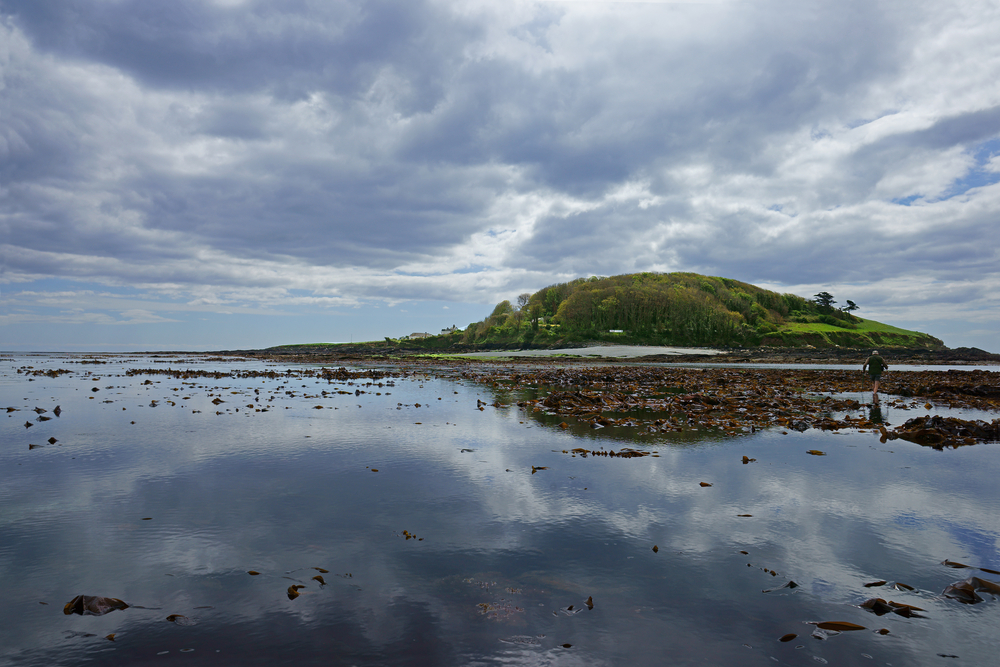Looe Island lies just one mile off Cornwall’s south coast but feels a world away from the hustle and bustle of the busy seaside towns nearby. On sunny days in the summer boats take visitors the short journey from Buller Quay in East Looe to the makeshift landing point on the white shingle beach of the island.
Access to Looe Island, also known as St George’s Island, is carefully managed for the benefit and protection of the wildlife and the only permanent human inhabitants are the two wardens working for the Cornwall Wildlife Trust, who care for the island.
Iron Age inhabitants on Looe Island
But this little dot of land has a long history of human habitation dating back to the Iron Age. It was once a site of Christian pilgrimage and more recently a haven for smugglers. In 1965 the island was bought by two remarkable sisters, Babs and Evelyn Atkins. These women loved their island home and the wildlife it attracted. They did all they could to preserve the wonderful environment that surrounded them and both wrote books about their experiences. Amazingly the pair survived there alone well into their 80s and after their deaths the island was donated to the Cornwall Wildlife Trust, so that it could be cared for as a nature reserve.
Covering just 22 acres the island has an amazing diversity of habitats – from coastal grassland to sandy beaches, woodlands to rocky shoreline – making it a unique haven for a wide range of wildlife. Around 20 species of butterfly have been spotted, as well as bats and of course numerous birds. The island’s database also records the names of more than 130 individual grey seals, some of whom return to the island year after year.
However, it is the huge numbers of sea birds that attracts many of the island’s human visitors. Cormorants, shags, fulmars and oystercatchers to name just a few and the island also has the largest colony of Great Black-backed Gulls in Cornwall.
So, why not take a trip to Looe Island and discover somewhere truly unique! Here’s an idea of what to expect whatever season you choose to visit:
Looe Island Diary
(The island is open to visitors from March to September.)
Spring – Great for wild flowers and early butterflies. Nesting birds such as cormorants, shags and gulls, are busy along the coast. There are usually plenty of passing of migrating birds such as Whimbrel, Swallow and Wheatear.
Summer – Flowers such as Bird’s-foot trefoil, White Champion and Thrift (Sea Pink). The numbers and varieties of butterflies increase, also migratory day- flying moths such as Hummingbird Hawkmoth. Lots of young birds fledging and Fulmars and Sparrow hawk nesting. Along the coast Rock Samphire and Sea Rocket are in flower.
Autumn – Migrant birds such as Whimbrel, Warblers and Sandwich Terns return south. There is a bountiful harvests on the fruit trees – from apples, to medlars, plums and walnuts. Insects feast on late flowing ivy. Birds feed on berries of shrubs and brambles.
Winter – The island closed to public.
For more information: http://www.cornwallwildlifetrust.org.uk/looeisland
